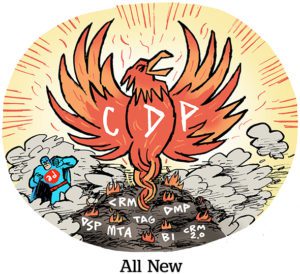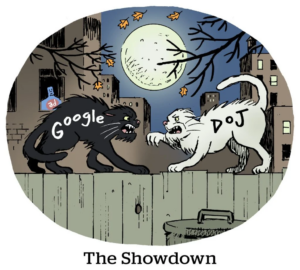“Data-Driven Thinking” is written by members of the media community and contains fresh ideas on the digital revolution in media.
Today’s column is written by Levi Matkins, CEO of LifeStreet.
It’s a new year and a new day in mobile programmatic.
Between 2020 and 2021, mobile experienced a massive boom as consumers turned to their devices for entertainment, connection and support during the pandemic. Heading into 2022, the industry predicted mobile engagement would remain high. However, with the removal of the IDFA, growing acquisition costs and inflation taking a toll on consumer spending, the global games market instead shrank by 4% last year.
As the economy fluctuates and budgets tighten, 2023 will be a year of adjustment. LTV curves will become harder to predict. And the industry will continue to build and test solutions to confront Apple’s removal of its IDFA. In the face of these conditions, app marketers will need new ways to find scale for their app advertising campaigns.
Here are five predictions for how they’ll grow their apps in 2023:
1. Enhanced transparency
Following the deprecation of the IDFA and the loss of rich audience profiles powered by user-level data, acquiring high-value users has gotten more complicated. This increased complexity has coincided with UA managers’ growing understanding of – and expectations for – programmatic.
A black-box relationship between DSPs and growth marketers is no longer standard. In 2023, there will be more scrutiny and transparency on how unique bidding models are built and ad dollars are spent.
2. A focus on profitability
Buoyed by capital investment, app developers have historically been more focused on growth than profitability. This focus has been evolving and will continue to shift in 2023.
Going forward, players will invest more in proven channels and strategies rather than speculative business initiatives. Therefore, there will be more emphasis on improving existing titles than on R&D for new titles and launches.
Finally, app developers will turn to well-known intellectual property (IP) to acquire large and existing audiences that are already engaged with a brand. Take the rise of mobile games based on the Harry Potter IP, which, in 2022, generated a combined $1 billion in player spending worldwide.
3. Generative AI for creative assets
In gaming, the sheer volume of assets required (2D art, 3D art, sound effects, music, dialogue, etc.) can be a massive impediment to scaling processes and unlocking efficiencies. But generative AI has the power to profoundly disrupt creative asset development.
We’ve already seen strong early adoption of this technology with Stable Diffusion, DALL-E 2, and Midjourney (text to image models) to generate art assets at scale. These types of models will soon assist creative teams with scaling in-game asset generation and lowering the price of content production dramatically. For example, production time for a single image can be reduced from weeks down to an hour.
Following the deprecation of the IDFA and the emergence of creatives as a key lever of performance, generative AI could be a powerful tool for scaling ad creative development as well.
4. Advertising standards that center the end user experience
To confront an uncertain economy in which LTV curves are harder to predict, advertisers will show more ads and push the boundaries of the traditional ad experience. More aggressive advertising practices are already emerging, such as introducing a delay before viewers can close the ad.
There is also an unmet need for standardization of the advertising experience. Today, developers use five to 10 different networks and exchanges to run ads, all of which provide a different experience for users.
A more intrusive ad experience combined with imprecise targeting will lead to calls for the market to implement advertising standards that prioritize consumers.
5. The rise of subscription tiers
As advertisers serve more ads to compensate for shifting LTV curves, ad-free subscriptions will likely grow. Nevertheless, advertisers should continue to offer ad-supported subscription tiers for users with budget constraints.
Looking forward
From new privacy restrictions to a shifting economy, there’s no question mobile programmatic has gotten more complex over the last few years. But like all things, business is cyclical. In 2023, the industry will refocus on what drives long-term value for app developers.
Follow LifeStreet on LinkedIn and AdExchanger (@adexchanger) on Twitter.
For more articles featuring Levi Matkins, click here.














